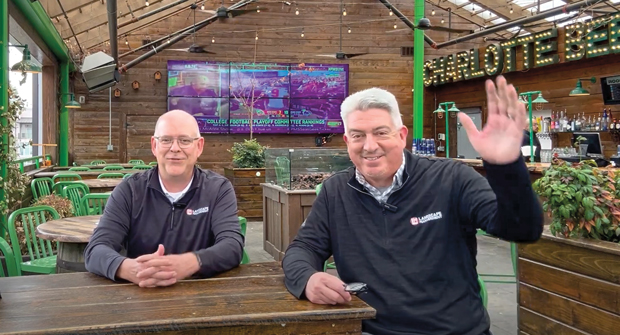
As I boarded a flight from Cleveland to Fort Lauderdale with my family in January, I received a text message from an unknown number. “Good morning,” it read. “We are looking forward to your arrival today. Thank you for your loyalty as a Hilton Member. Is there anything we can do before you check in? –Linda”
Yes, in fact, there were a few questions I had before I arrived. I quickly replied, asking for kid-friendly dinner recommendations and to confirm the beach was in walking distance from the hotel. It was my daughters’ first trip to the ocean. I wanted to be sure the hotel was as close as I thought it was when I booked it, so we could beeline over there when we arrived.
I had the information I requested before we even took off.
Now, could I have accomplished the same thing with a simple phone call to the hotel? Of course. But the proactive text message hours before I arrived in the state—let alone on-site—felt effortless. A phone call feels like another “to-do.”
Hospitality brands like Hilton are recognizing the benefits of texting, also known as short message service (SMS), because it’s familiar and efficient for customers. For one, it eliminates the need for users to download an additional app. It’s also ubiquitous: Three-quarters of Americans are smartphone users and nearly all of them text, according to the Pew Research Center.
Other industries are betting on SMS, too. I’ve been experimenting with a banking service called Digit over the last year to build up a rainy day fund. Digit essentially skims off the top of your checking account, saving a few dollars here and there that you wouldn’t otherwise notice. You set it up online, but the rest of the interactions are through text messaging. If I need to know my balance, I send a text and get an immediate answer. If I need to transfer the money back into my checking account, I send a text. Voila—my money is there.
There’s even a startup called Magic that serves as a mobile concierge. Dubbed a “personal assistant on demand,” it’s a phone number you text to get anything you want, “hassle-free, 24/7.” You’re billed $35 per hour plus a standard processing fee.
Landscape companies like Canopy Lawn Care—the subject of our cover story—that are incorporating texting into their operations from the outset are bound to get a leg up on their incumbent, slower-to-the-game competitors.
Many say messaging is the future—and not just for millennial clients. Simple and effective are two customer “wants” that know no generation.
Companies that make up the “on-demand” economy—Uber, GrubHub and TaskRabbit and their counterparts in the landscape industry—are appealing for many reasons, but they aren’t yet tapping texts as their main form of customer communications. They still rely primarily on their own web and mobile apps—and they may be missing out on customers who want to exclusively text with their service providers.
You—as an owner or manager—might be saying “my clients know they can text me anytime,” but how feasible or scalable is that? You can only handle so many messages and requests without losing your mind or dropping the ball.

